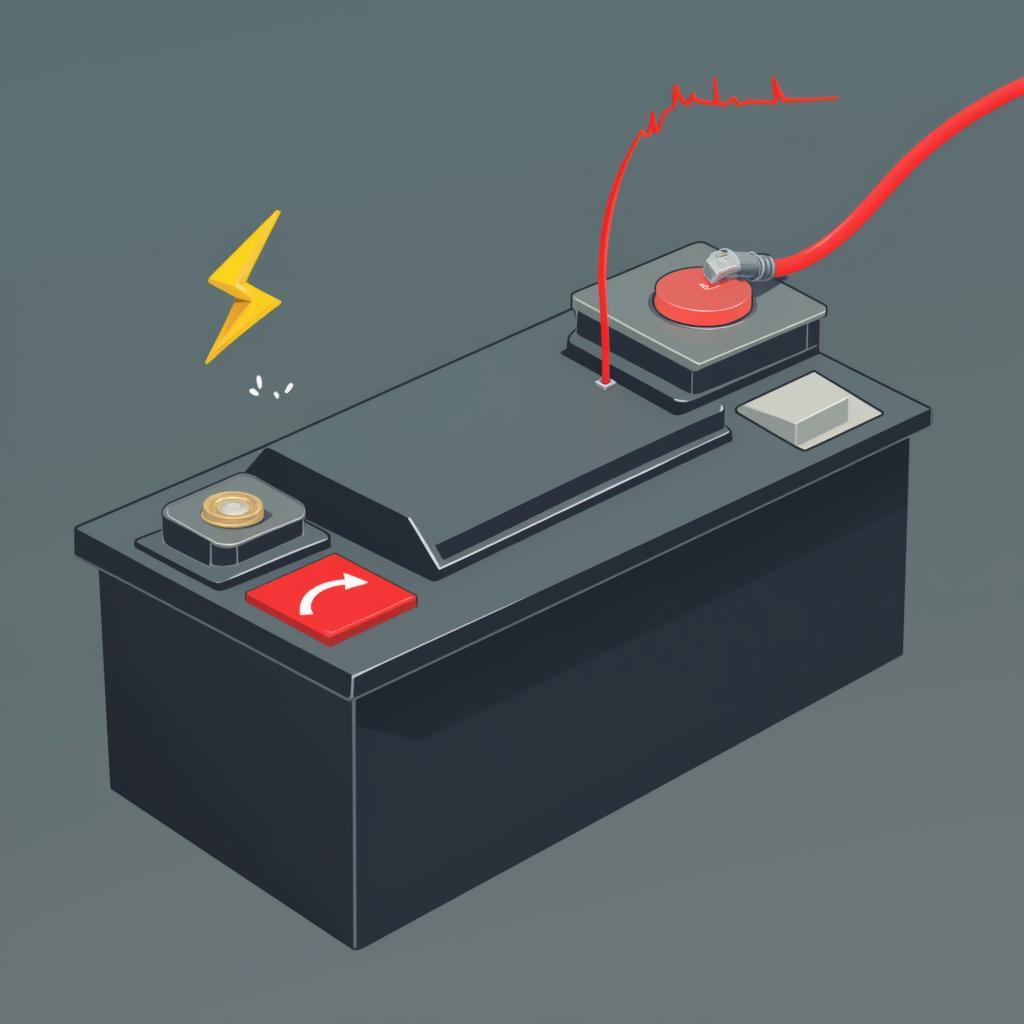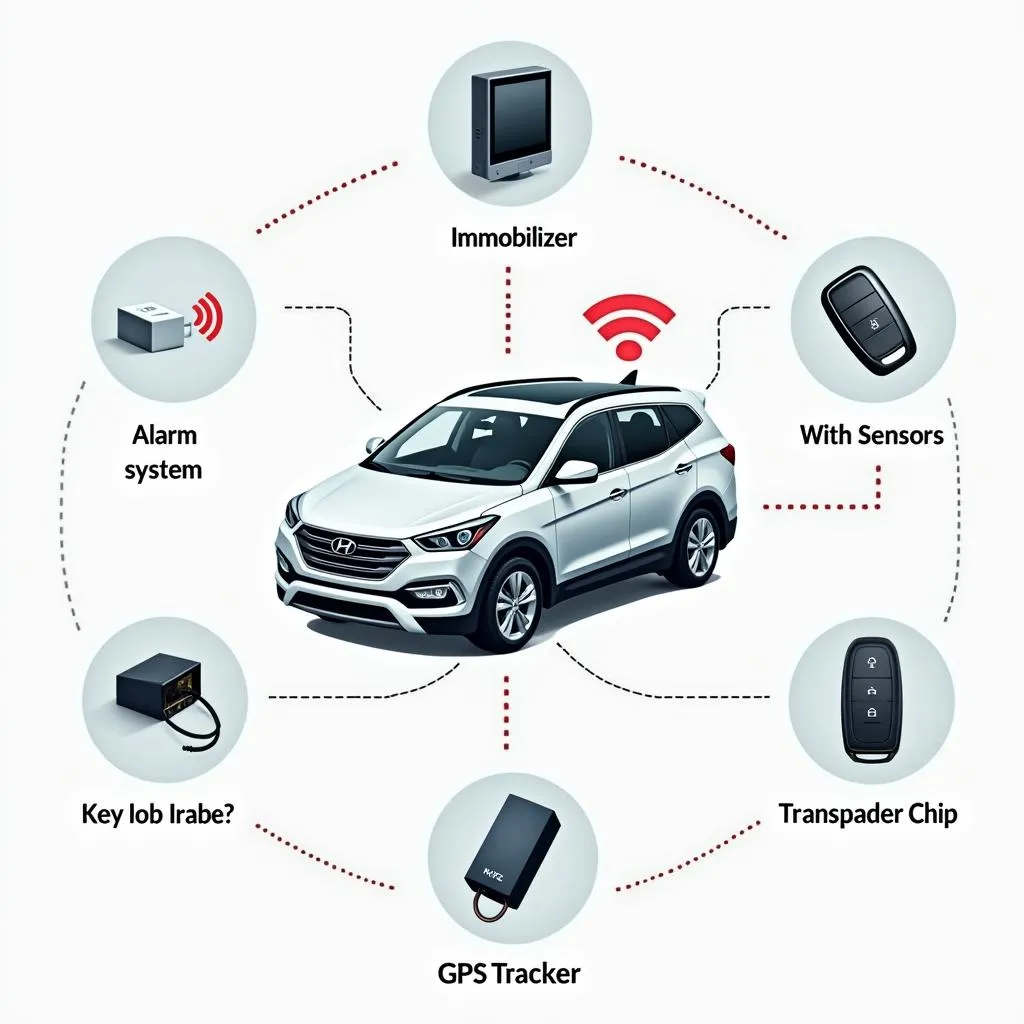A parasitic voltage draw, also known as a parasitic drain or dark current, can be a frustrating and perplexing problem for car owners. It occurs when an electrical component in your vehicle continues to draw power even after the ignition is turned off, slowly draining your battery. This article will guide you through identifying, diagnosing, and fixing this issue, potentially saving you from a dead battery and a costly tow. Let’s explore how to identify and fix this “vampire” draining your car’s battery life. 2015 gmc sierra trailer brake system warning
What is a Parasitic Voltage Draw?
A parasitic voltage draw, simply put, is unwanted electricity consumption when your car is off. This “phantom” drain can range from a minor inconvenience to a major headache, leaving you stranded with a dead battery. Understanding what constitutes a normal draw versus an excessive one is crucial.
 Parasitic Draw Illustration
Parasitic Draw Illustration
How to Test for a Parasitic Voltage Draw?
Testing for a parasitic draw requires a digital multimeter, a tool readily available at most auto parts stores. The process involves disconnecting the negative battery cable and connecting the multimeter in series with the battery and cable. Remember to follow safety precautions and consult your vehicle’s service manual.
Using a Multimeter to Detect the Drain
- Set your multimeter to the DC amps setting.
- Disconnect the negative battery cable.
- Connect the red lead of your multimeter to the negative battery terminal.
- Connect the black lead of your multimeter to the disconnected negative battery cable.
- Observe the reading on the multimeter. A reading above 50 milliamps (0.05 amps) generally indicates a parasitic draw.
Common Causes of Parasitic Voltage Draw
Several culprits can contribute to excessive parasitic draw. These range from faulty components like alternators and regulators to more subtle issues like glove box lights or faulty door switches. Identifying the specific source requires systematic investigation.
Pinpointing the Culprit: A Step-by-Step Approach
- Start with the Obvious: Check interior lights, glove box lights, and trunk lights. Ensure they are turned off completely.
- Check the Aftermarket Accessories: Aftermarket stereos, alarms, and other add-ons can be significant power consumers.
- Inspect the Fuses: Remove fuses one by one while observing the multimeter reading. A significant drop in current when a specific fuse is removed indicates the circuit with the parasitic draw. 2008 gmc sierra service trailer brake system warning
- Relays and Modules: Faulty relays and modules can also cause parasitic draws. These often require more specialized diagnostic tools.
- Wiring Issues: Damaged or corroded wiring can create unintended electrical paths, leading to parasitic drains.
“A methodical approach to diagnosing parasitic draw is essential,” says automotive electrical specialist, John Miller. “Jumping to conclusions can lead to unnecessary part replacements and wasted time.”
Fixing the Parasitic Draw
Once the source of the parasitic draw is identified, fixing it can range from a simple bulb replacement to a more involved repair, like replacing a faulty module.
Remote Diagnostics and Programming
In some cases, remote diagnostics and programming can address software-related parasitic draws. This involves connecting specialized diagnostic software to your vehicle’s onboard computer to identify and rectify software glitches. 2017 gmc sierra trailer brake system warning
“Modern vehicles are increasingly reliant on complex software,” adds Miller. “Remote diagnostics allows us to pinpoint and resolve software issues that may contribute to parasitic draw, without the need for extensive physical investigation.”
Preventing Future Parasitic Draws
Prevention is always better than cure. Regular maintenance and inspection of your vehicle’s electrical system can significantly reduce the risk of parasitic draws. Keeping your battery terminals clean and ensuring proper installation of aftermarket accessories are essential steps. 2014 gmc sierra trailer brake system warning
Conclusion
Parasitic voltage draw can be a troublesome problem, but with the right tools and approach, you can successfully diagnose and resolve the issue. Understanding the common causes, using a multimeter effectively, and following a systematic process are crucial to conquering parasitic draw and keeping your car battery healthy. Don’t let a parasitic voltage draw leave you stranded! trailer brake system warning gmc sierra
FAQ
-
What is a normal parasitic draw? A normal draw is typically below 50 milliamps (0.05 amps).
-
Can a bad alternator cause parasitic draw? Yes, a faulty alternator or voltage regulator can contribute to excessive draw.
-
How long does it take for a parasitic draw to drain a battery? The time depends on the severity of the draw and the battery’s condition. It can range from a few hours to several days.
-
Do all cars have some parasitic draw? Yes, all vehicles have some level of parasitic draw to maintain essential functions like the clock and alarm system.
-
Is it safe to disconnect the battery? Yes, it’s generally safe, but consult your vehicle’s manual for any specific instructions or precautions.
-
Can extreme temperatures affect parasitic draw? Extreme temperatures can exacerbate existing electrical issues and potentially increase parasitic draw.
-
What should I do if I can’t find the source of the draw? If you can’t identify the source, it’s best to consult a qualified automotive electrician for further diagnosis.

